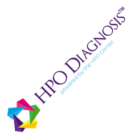If your organization or organizational unit aims for continuous improvement, better collaboration, and higher performance, it’s crucial to first gain insight into how you score on the five success factors of High Performance Organizations (HPOs). Becoming or remaining an HPO offers numerous benefits, not only for the organization as a whole but also for customers and individual employees. Download our brochure here!
- MORE VALUE FOR CUSTOMERS
An HPO focuses on maximizing customer value and satisfaction, leading to a stronger market position and more loyal customers. - ENERGY AND JOB SATISFACTION FOR EMPLOYEES
Pursuing high performance revitalizes the organization and increases job satisfaction. Employees are more engaged and motivated because they focus on what truly matters for the success of the organization. - FUTURE-PROOFING
An HPO is better prepared for a rapidly changing and competitive world. By continually making adjustments, learning, and improving, an HPO becomes more resilient, flexible, and better prepared for the future, whatever it may bring. - STRATEGIC AND FINANCIAL BENEFITS
An HPO leads to better strategic performance, including ‘greater openness in the organization,’ ‘better collaboration,’ ‘better reputation,’ and ‘more attractiveness to new customers and staff.’ This leads to better financial results. High Performance Organizations in the non-profit and public sectors are found to be able to do more essential things with the same financial resources.
And this is not for a short period, but year after year!
ARE YOU READY TO TRANSFORM YOUR ORGANIZATION INTO AN HPO?
Then insight is essential. Our HPO diagnosis (short validated questionnaire and in-depth interviews) provides you with this insight. You will get a clear picture of the current situation within your organization or department and receive practical improvement themes that managers and employees can tackle together.
The HPO diagnosis is not just a mirror; it is a compass that guides you in taking crucial steps to achieve your strategic goals and become an HPO. Do you want to elevate your organization to a higher level? The HPO Center can support you in this. We combine over fifteen years of practical experience with hundreds of organizations worldwide with scientific research to provide you with the knowledge and focus that result in demonstrably better performance. HPO is not a project, but a mentality that makes your organization more resilient, flexible, and future-proof. It helps you identify the ‘hard nuts’ and provides a basis for measuring the effectiveness of the HPO transition. It also strengthens the solidarity within your organization (or part of it) by identifying and addressing shared, supported improvement themes.
So don’t wait any longer and discover the benefits of an HPO Diagnosis for your organization. Take the first step today towards (even) better performance! Contact Marco Schreurs or André de Waal. Or download our HPO-brochure here!
What do the executive teams of competing firms actually compete on? Not on their firm’s products and services, that is the company’s output. In fact, executive teams primarily compete on the quality of their insights about their own organization. The first basis of competition between executive teams is the understanding of what really happens in their organization.
EXAMPLE STEP-BY-STEP PLAN HPO DIAGNOSIS TRAJECTORY (DURATION UNTIL STEP 8: 4 – 8 WEEKS)
- Step 1: HPO workshop for inspiration (virtual or onsite)
- Step 2: Planning and creation of the online HPO-questionnaire (35 items) and guidance (available in 15+ languages)
- Step 3: Online HPO scan (filling in the questionnaire will take a maximum of 10 minutes)
- Step 4: HPO analysis of the scores done by our HPO Experts and your the HPO Coaches (trained by our HPO Experts)
- Step 5: In-depth interviews (the findings of our analysis make up the basis for interviews conducted by the HPO Center in conjunction
 with the HPO Coaches)
with the HPO Coaches) - Step 6: Creation of the overall HPO profile of the organization and section-HPO-profiles of the underlying units
- Step 7: Overall Feedback and unit-workshop(s) with conclusions and recommendations facilitated by the HPO coach and the HPO Center
- Step 8: Action-workshops with managers and employees (done by the internal HPO Coaches you’ve selected, who have been trained by our HPO Experts)
- Step 9: Monitoring of progression in HPO improvement-course by HPO Coaches in cooperation with our HPO Expert
- Step 10: In order to follow developments and achieved results, a second HPO Diagnosis is performed 1.5 to 2 years after the first HPO Diagnosis (to be discussed)
Download our brochure here! Or contact Marco Schreurs for more information.
What we thought we bought: a change initiative, a methodology and an answer to our problems. What we actually got: a framework for change, a common language and something to get behind. What did it feel like: uncomfortable at the start, connecting & satisfying and a boost in performance.
The main reason for starting an HPO Diagnosis is management’s strong wish for the organization to excel. In addition, there are quite a few other reasons for starting the HPO-diagnosis. Click here for a list of eight of these reasons as given by the clients of the HPO Center.
“I met André in 2007 when I was engaged in a major turnaround. The HPO methodology provided a perfect means of benchmarking where we were, telling us what good looked like, the things that we really needed to focus on, a target to aim for and the means to measure our progress – excellent. On a personal basis I really enjoyed working with André, bright, perceptive and always challenging – always adding further polish to the HPO Diagnosis!”
“We found the HPO Diagnosis process to be incredibly valuable. The study showed not only what makes Archway great but we also now have statistically valid Attention Points to work on that tie back to the Five Pillars. This needs to become an annual benchmarking process for all organizations striving to become and remain high performing. Dr. de Waal’s definition of a High Performance Organization should be the world-wide standard.”
“HPO has the advantage of being highly practical and easy to implement. Thanks to the HPO-diagnosis you can quickly tell what to do in order to improve performance. It is a methodology that properly puts a finger on the issues.”



